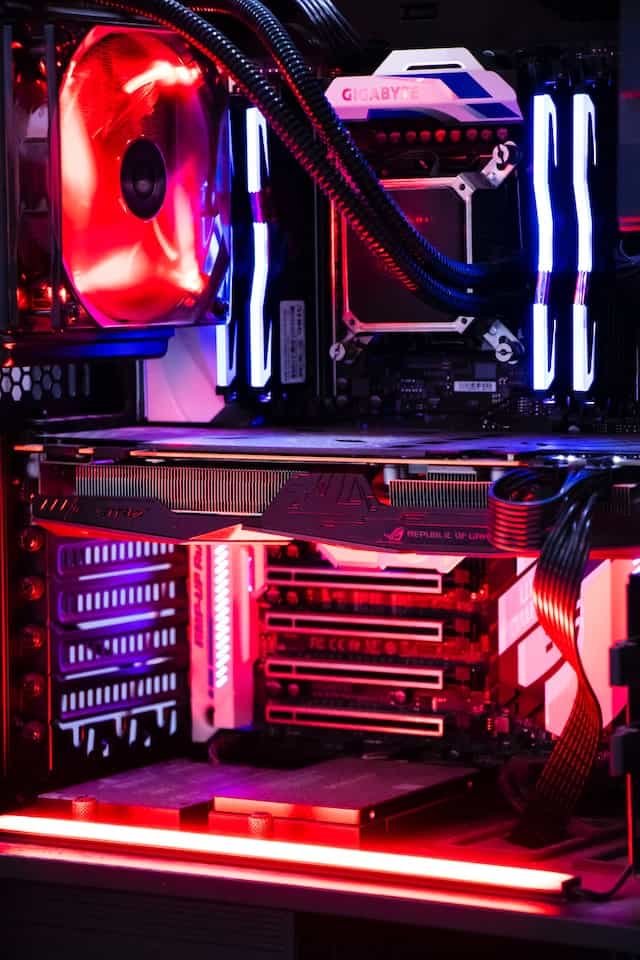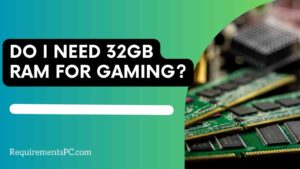Compatibility of Laptop RAM With Desktop
Generally, laptop RAM is not compatible with desktop systems due to the form factor and design differences between the two components. However, by utilizing an SO-DIMM to DIMM adapter, it is possible to insert laptop RAM into a desktop system. This adapter bridges the gap between the two components, allowing laptop RAM to be inserted into desktop RAM slots.
It is essential to bear in mind that laptop RAM may have different frequencies than desktop RAM, so it is imperative to confirm compatibility with the motherboard prior to making any RAM modifications. It is important to research the specifications of your motherboard prior to making any modifications to the desktop RAM, as incompatibility may lead to performance or stability issues, or even cause damage to the motherboard.
How To Use Laptop RAM on a Desktop
It is possible to use laptop RAM in a desktop computer by using a SO-DIMM to DIMM adapter. The process is relatively simple, although it does require a certain level of technical expertise.
These adapters are designed to bridge the gap between laptop RAM, which comes in the form of a SO-DIMM, and the desktop RAM slot which comes in the form of a DIMM. The adapter plugs your laptop RAM into your desktop’s RAM slot.

Compatibility Issues
When selecting RAM for a desktop, it is important to take into consideration that not all laptop RAM is compatible due to variations in physical size and pin configuration. To ensure compatibility, it is essential to check the RAM’s DDR specifications as well as the specifications of the desktop motherboard prior to purchasing an adapter. This will guarantee that the required adapter is suitable for use with your desktop.
It is important to you that consider compatibility issues when using an AMD system, as many AMD systems do not support SO-DIMM to DIMM adapters. Installing these adapters in an AMD desktop might result in the system crashing after powering on.

Difference Between Laptop and Desktop RAM
The primary difference between laptop and desktop RAM lies in form factor and size. Desktop RAM is larger in size and offers increased memory storage capacity compared to laptop RAM. Additionally, desktop RAM runs at a higher clock speed, which allows for faster data transfer. It also requires more power to run due to its higher voltage compared to laptop RAM, which is designed to run with low power consumption (LPDDR). This makes laptop RAM suitable for portable devices where battery life is key. Further, the type of RAM used differs; desktop RAM typically uses DIMM, while laptop RAM uses SO-DIMM RAM.

Potential Performance Issues
Laptop RAM is generally not compatible with desktop unless you have SO-DIMM to DIMM adapter, but there are potential issues that could arise from its use in a desktop system. One of the primary concerns is performance. As I discuss above laptop RAM runs at lower clock speeds than desktop RAM, which may not be able to keep up with the demands of your desktop computer.
Laptop RAM is not considered as reliable as desktop RAM, which can lead to compatibility issues and potential performance issues. Additionally, laptop RAM has a lower capacity than desktop RAM, posing restrictions on the number of tasks that can be run simultaneously or the amount of data that can be stored on a desktop computer.
Final Thoughts
Utilizing laptop RAM in a desktop computer with a SO-DIMM to DIMM adapter is technically possible, but it’s not strongly recommended. This is because using laptop RAM may damage the RAM socket and result in decreased RAM performance and potential compatibility issues. To guarantee optimal performance and guard against damage or compatibility issues, it is best to use RAM specifically designed for desktop computers.





